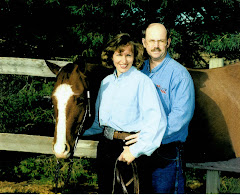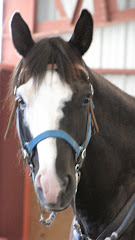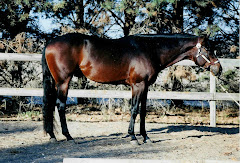 My Horse Lot
My Horse Lot Anyone hear about The Wild Horse Model before. Joe Camp in his book, “The Soul of a Horse” talks about a natural pasture. One with rocks and stones and steep up and down hills. This is an imitation of how the wild horses live. Joe states that the horses in the wild are healthier and more sound, on the average.
Horses in the wild would travel 15-20 miles a day. They would stay as a herd, with safety in numbers. They would spend 16-18 hours a day eating. They would control their own internal body temperature. They would walk on firm ground, and not be standing in their own manure. And wild horses would get REM sleep, unstressed sleep, where they would lay down, surrounded by the herd for safety.
He states that a horse should eat from the ground. A horse should have a wild horse trim. A horse should have plenty of movement on rough, uneven ground.

The horse’s instinct is to have food, water, safety, and to reproduce. Survival includes a life of instincts. This includes how to be part of the herd, understanding the herd language, and understanding the social order of the herd.
The horse’s instinct kicks in all the time. When to move and how fast. When to try to see something in the distance and decide to run now or stay. Why horses do what they do.
Pete Ramey uses the “wild horse trim”. The horse’s hoof is suppose to flex. The flexing provides shock absorption and acts to pump the blood through the leg. The hoof can’t flex with shoes on. A hoof that can’t flex becomes unhealthy due to lack of circulation to the hoof wall and sole.
But our modern day horses aren’t all wild mustangs, or descendants of mustangs. We don’t have horses with rock-hard hooves. We have horses that are stalled or need to be in lots. We all don’t have acres and acres to make a natural pasture.
Pete Ramey uses the “wild horse trim”. The horse’s hoof is suppose to flex. The flexing provides shock absorption and acts to pump the blood through the leg. The hoof can’t flex with shoes on. A hoof that can’t flex becomes unhealthy due to lack of circulation to the hoof wall and sole.
But our modern day horses aren’t all wild mustangs, or descendants of mustangs. We don’t have horses with rock-hard hooves. We have horses that are stalled or need to be in lots. We all don’t have acres and acres to make a natural pasture.
So we need to shoe some of our horses. And when we don’t shoe, we keep our horse’s hooves as healthy as we can.
If you had the chance to develop a “wild horse model” now, how would you do it or what can you do now? I don’t have any steep hills. And I’m not sure I want to put boulders in my horse lots. This will take some thinking.
 We are to do what is best for the horse. Sometimes, that is hard to do when you have limitations.
We are to do what is best for the horse. Sometimes, that is hard to do when you have limitations.Maybe we have to do the best we can for the horse, with what we have! But we can change what we do or how we do something, for the benefit for the horse.
Once again, this will take some thinking to figure out what changes I can make. I have kept my horses barefoot as much as I can to strengthen their hooves. I do feed them on the ground, since they like to pull the hay out of the round bale feeder and onto the ground. I feed them grain in low feeders.
I do keep them living as natural as I can outside. They don’t have winter blankets. Some of them have to go to a tree lined area to get out of the wind. The horses know how to turn their butts to the wind.
What I can do is to look for as different of terrain, as I can find, to ride. I can try to keep their lots as clean as I can so they don’t have to stand in muck. I can try to toughen up their feet by riding the ones, that I ride the most, on the soft gravel areas and sides of the road.
I’ll have to keep thinking of ways to change, as change can be good.
Any other ideas?







2 comments:
Having limited acres is tough. We have 2 pastures on our 25 acres, but they are probably only about 7 acres each. There is water on both those pastures, but no rock and not much for hills. I leave them barefoot unless I am going somewhere out of area that I think is terrain they are not used to & would rather be safe than sorry. I started blanketing last year after so many blizzards but I am sure it is more for me than for them.
In one of our corrals, we have a big compost pile that should have been hauled out & wasn't. The horses take turns standing on it. They actually have a little pass thru the middle of it.
Our horses also play "king of the hill" anytime we mound up the dry lots. At least it is one place that dries out when the rest of the place is muddy.
The only hard terrain we have in our flat pens is when it's so hot and dry in the summer and the lots are rock hard, and the same in the frigid winters, when the ground is cold and hard!
Post a Comment